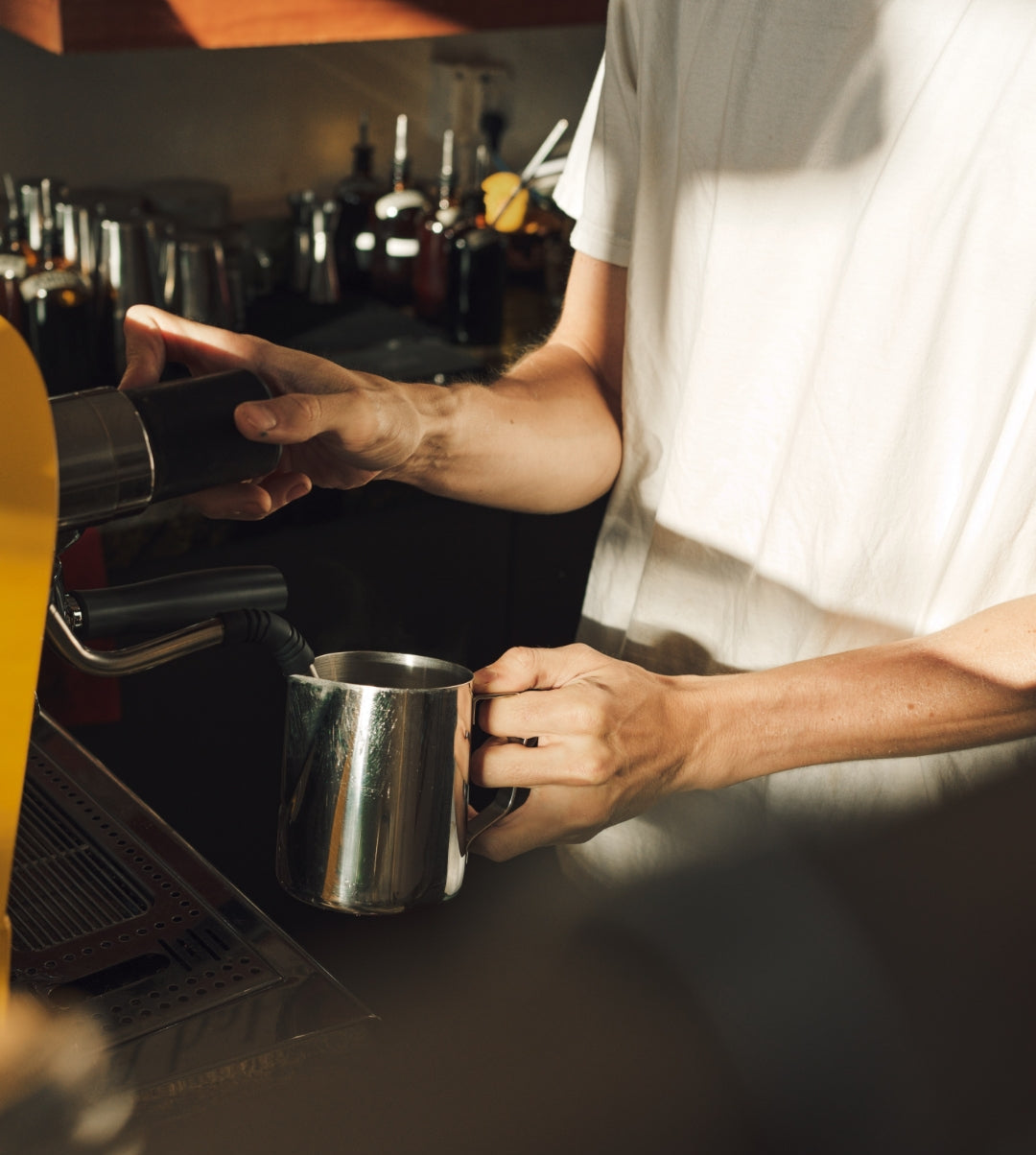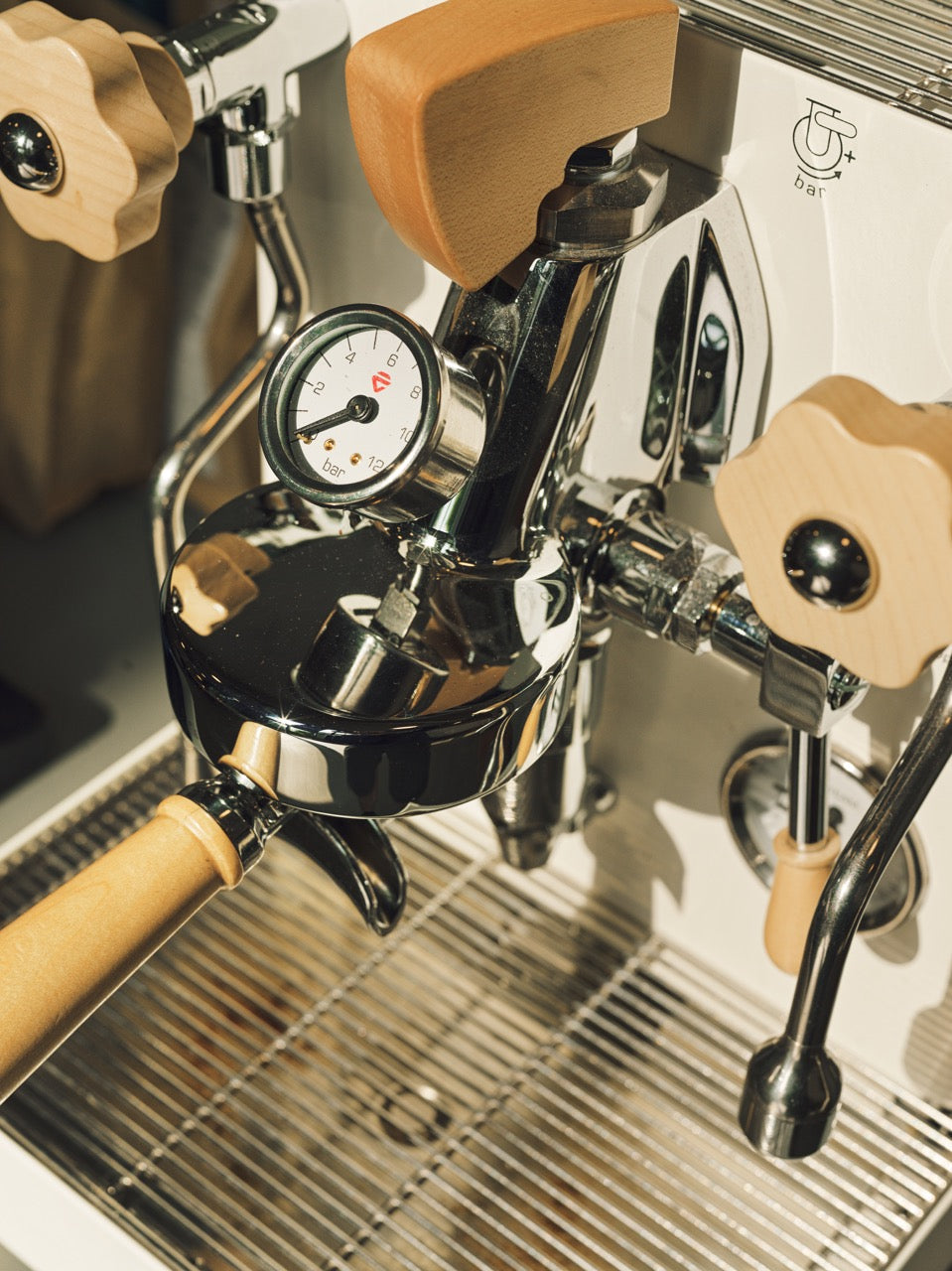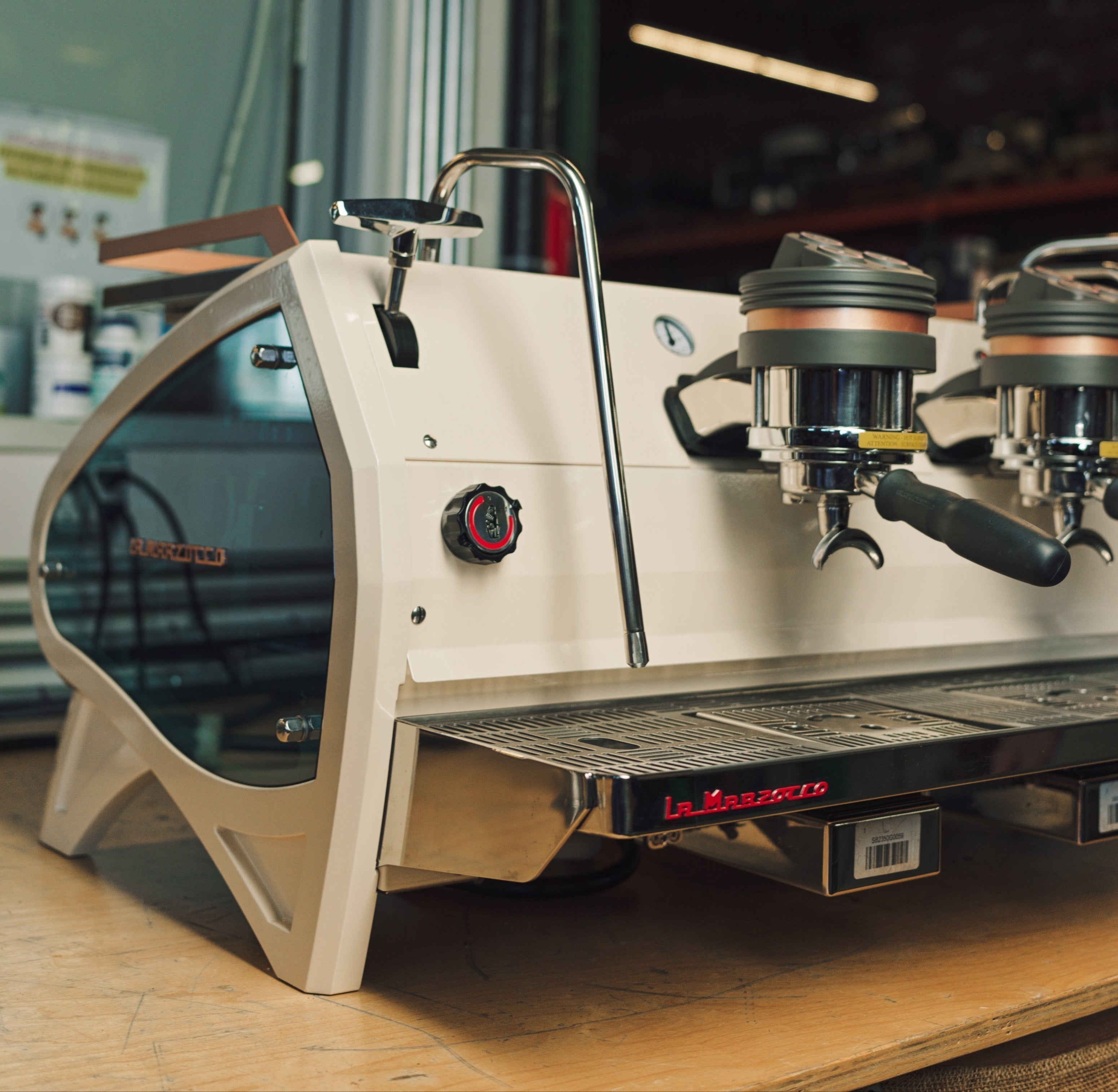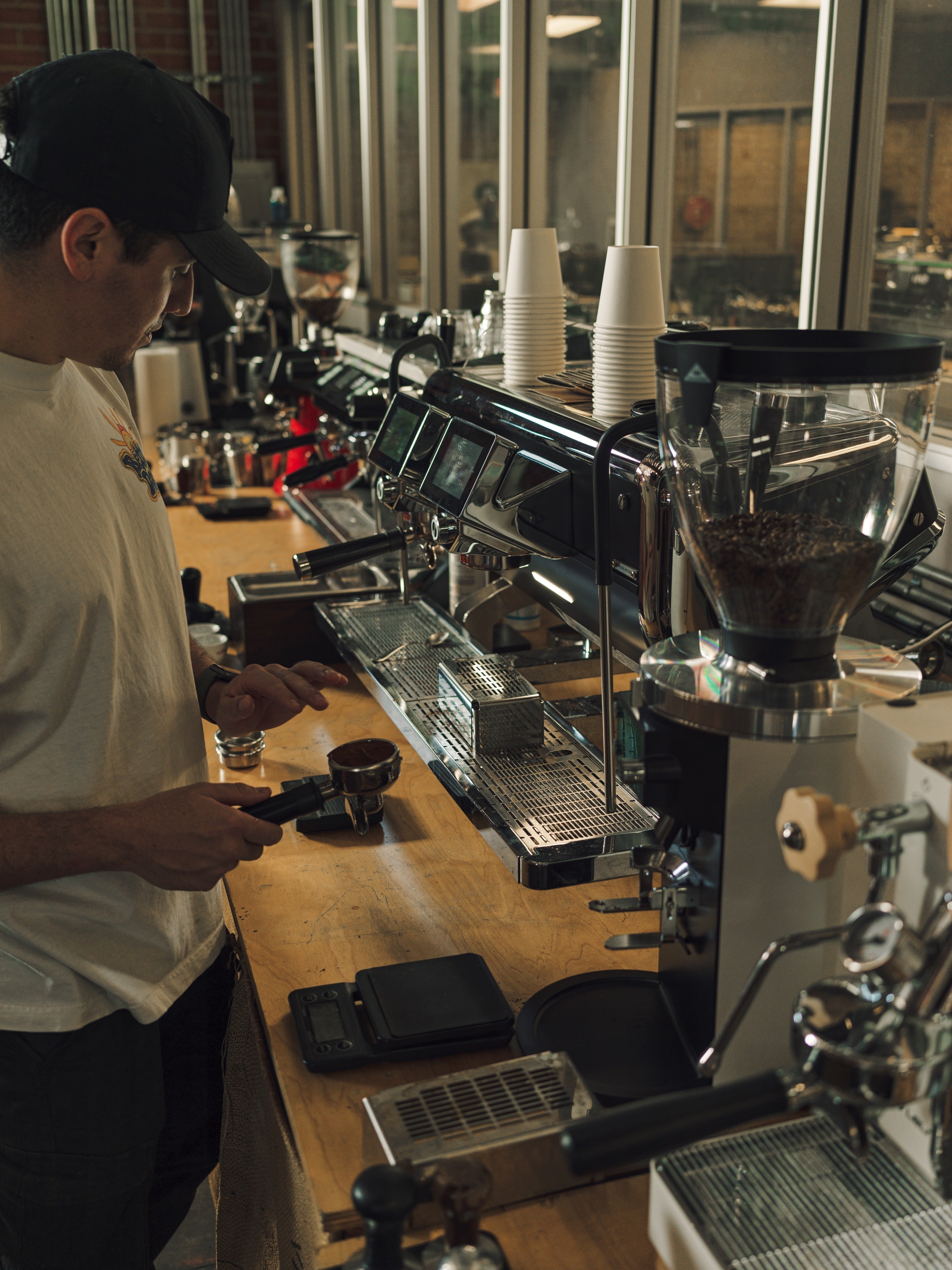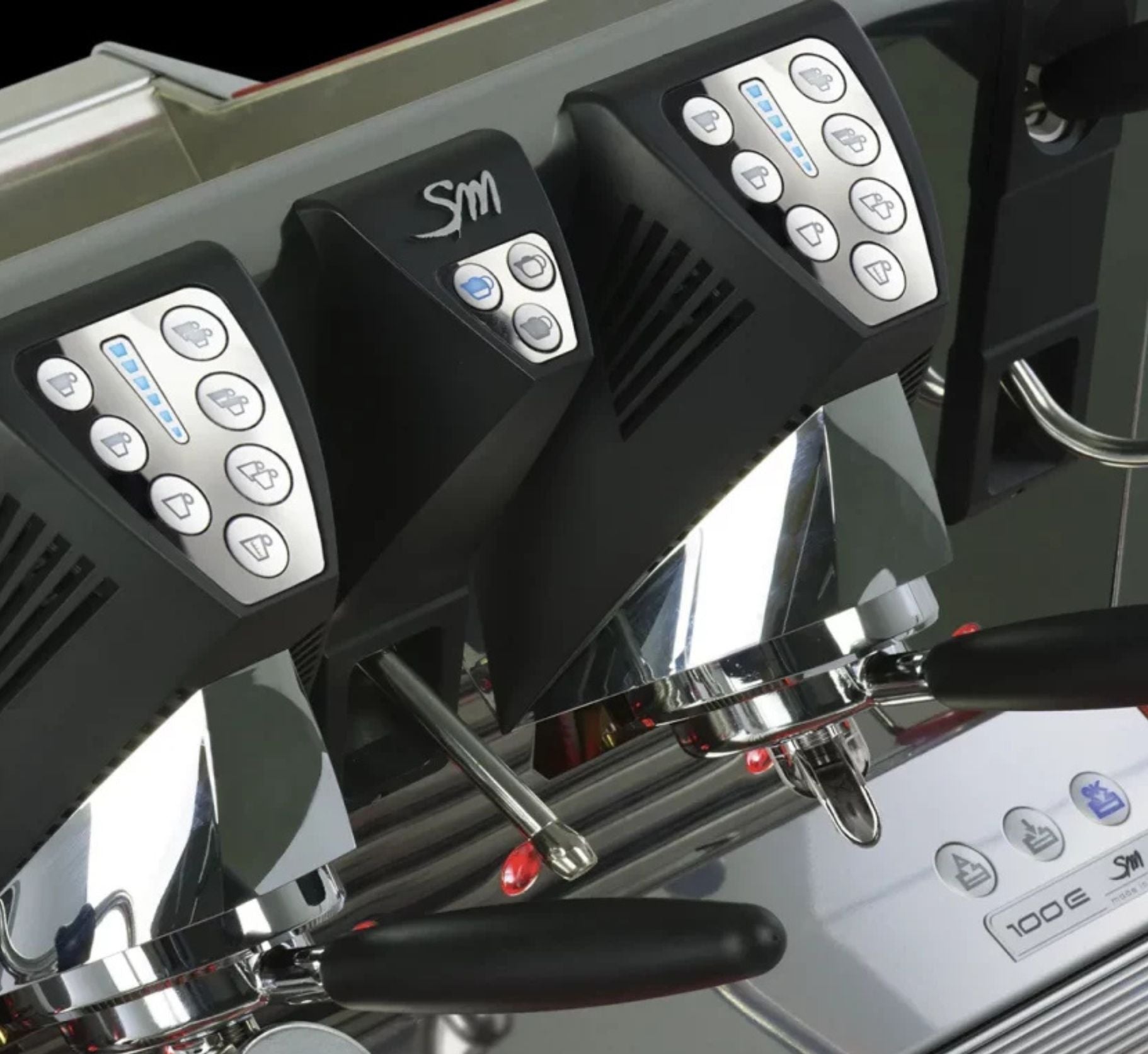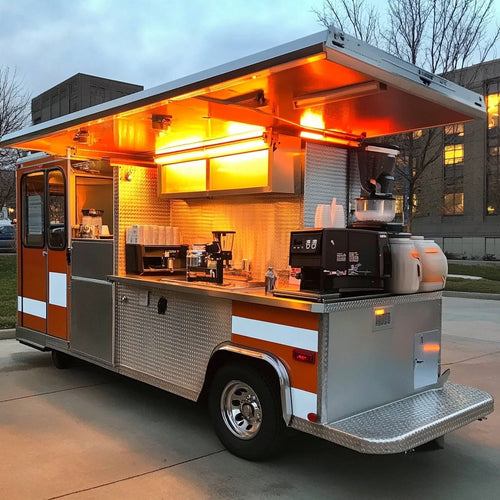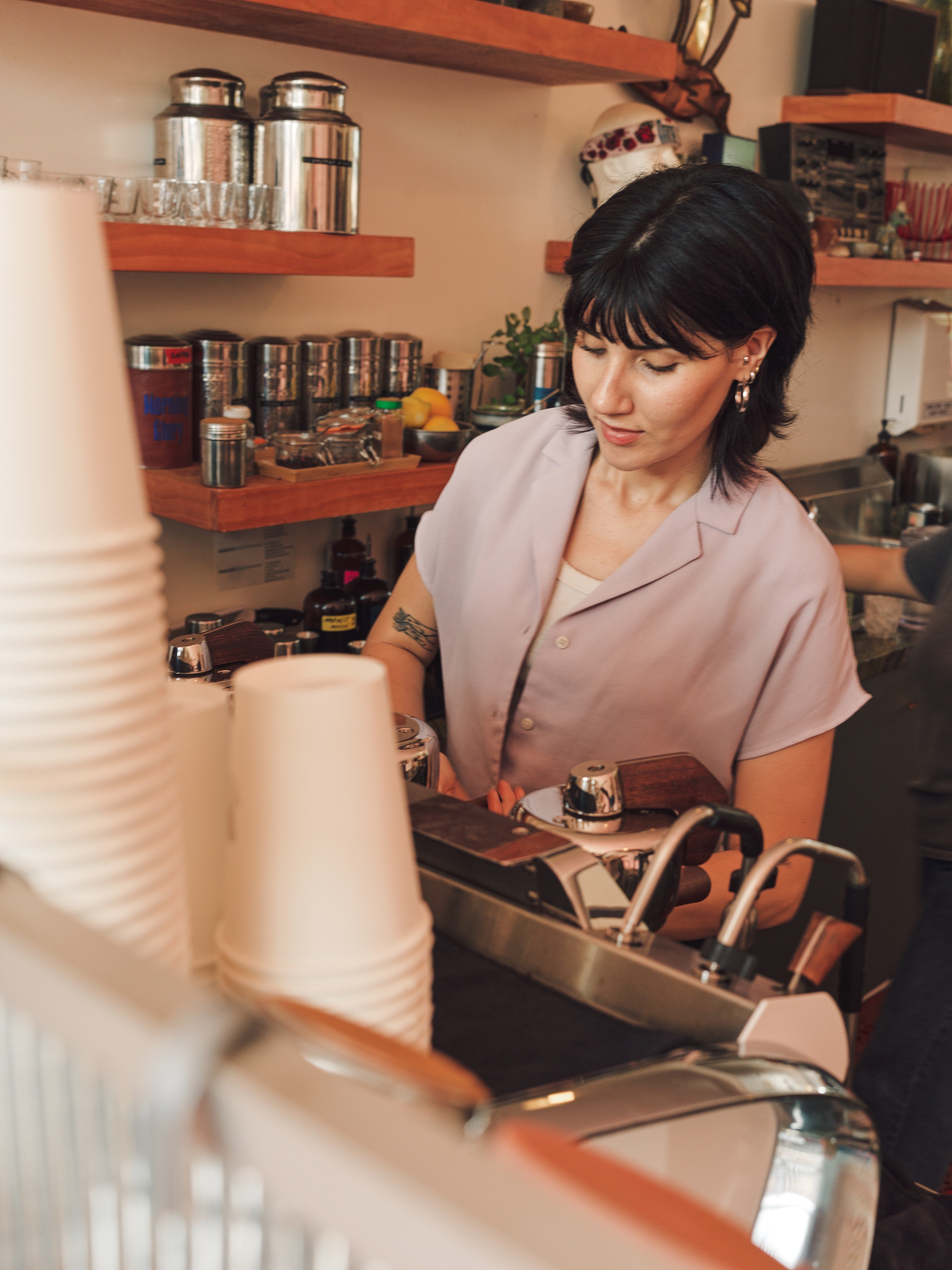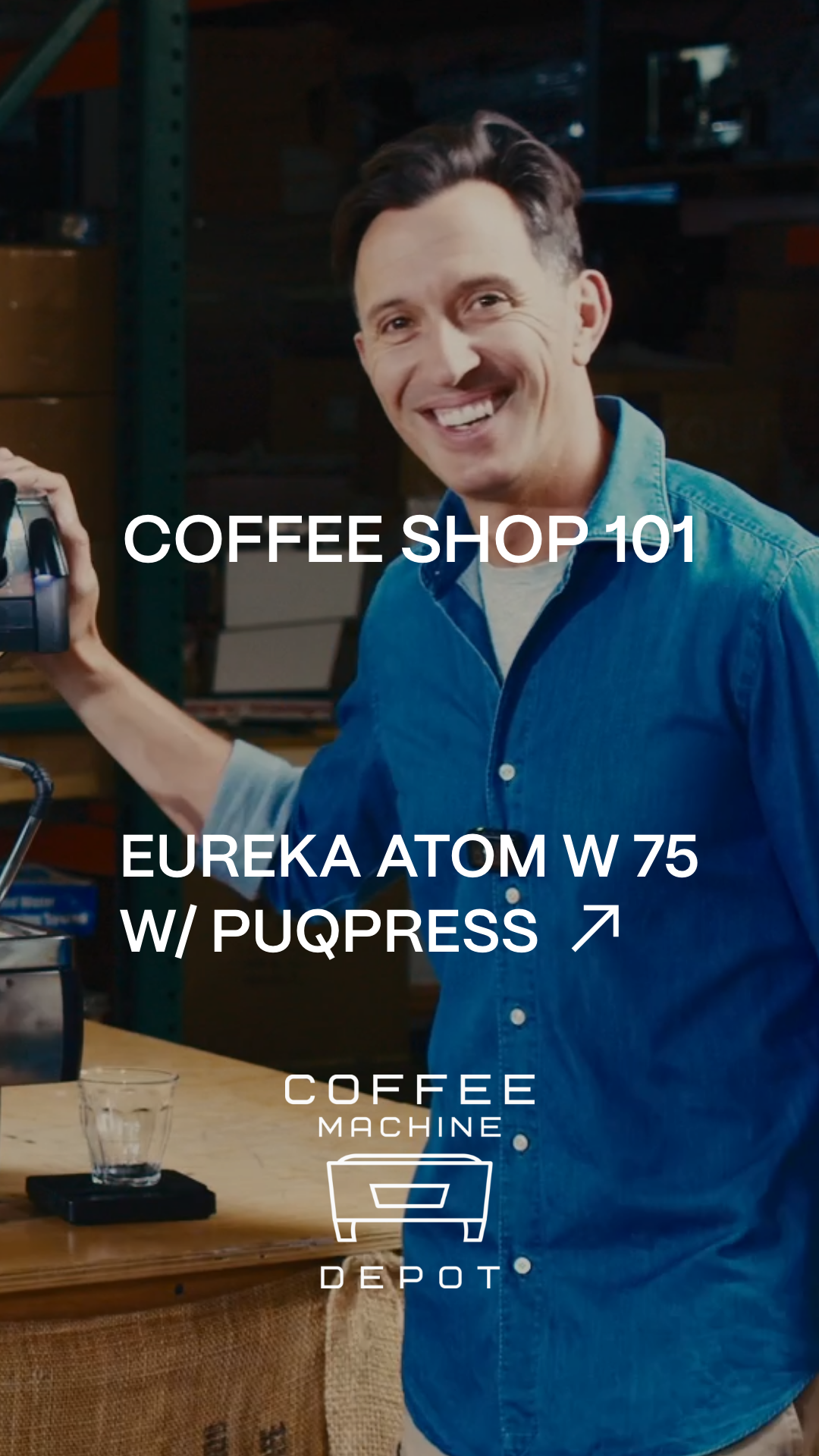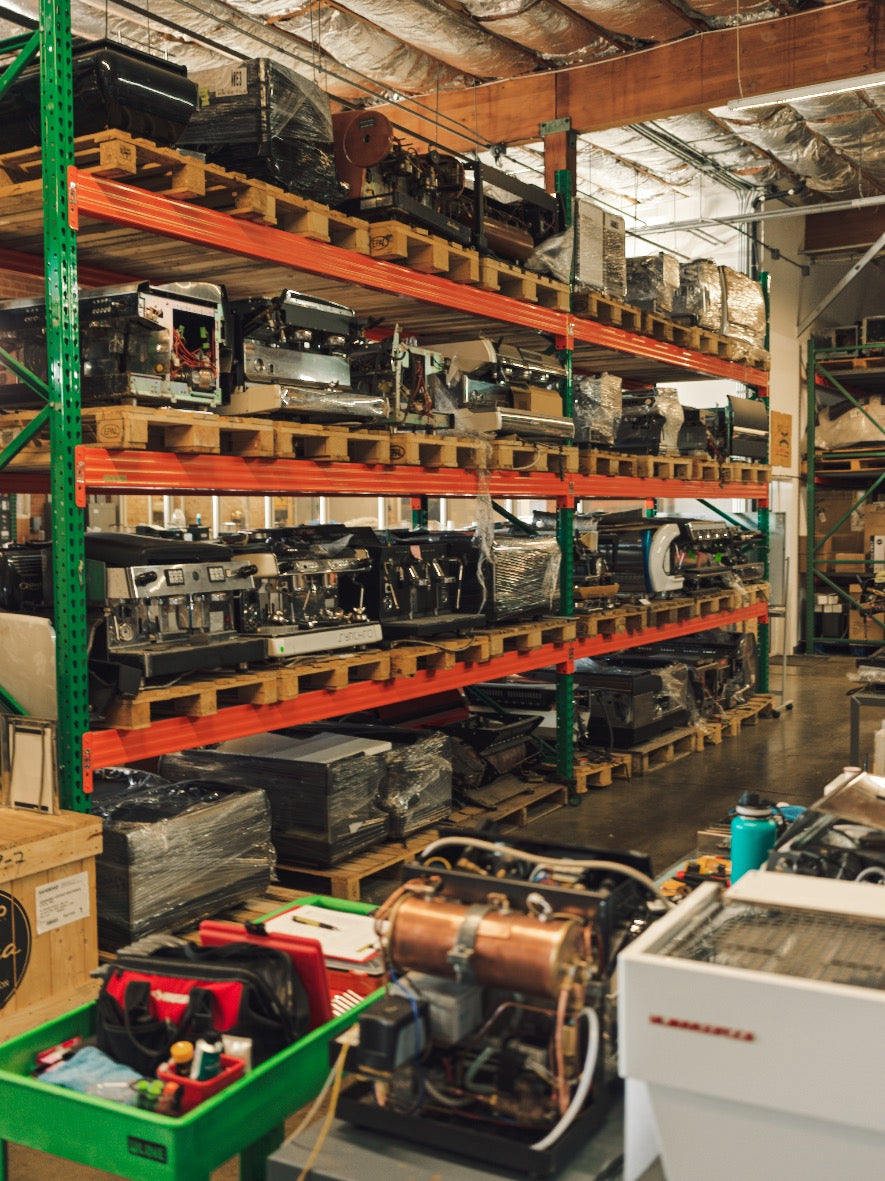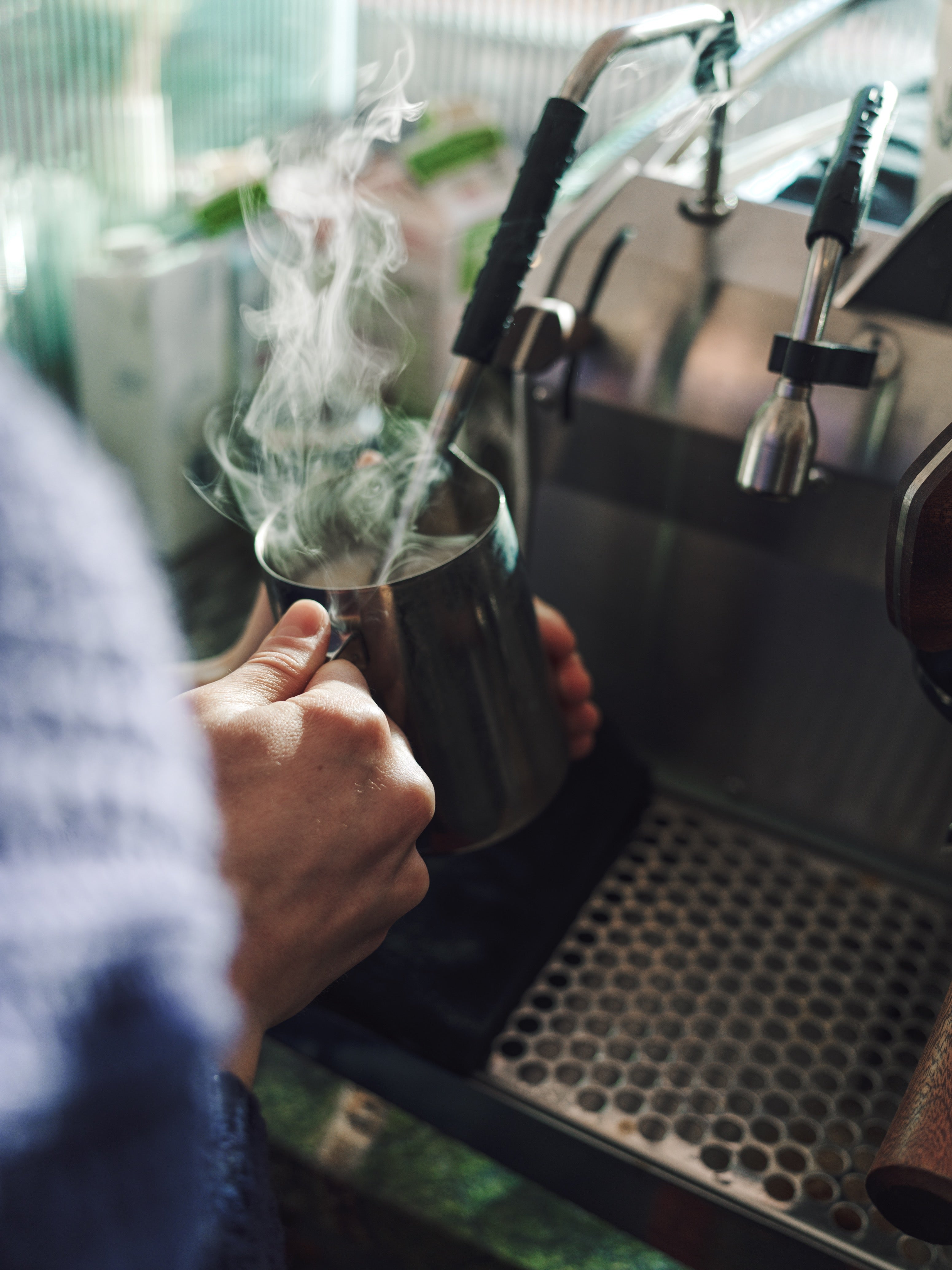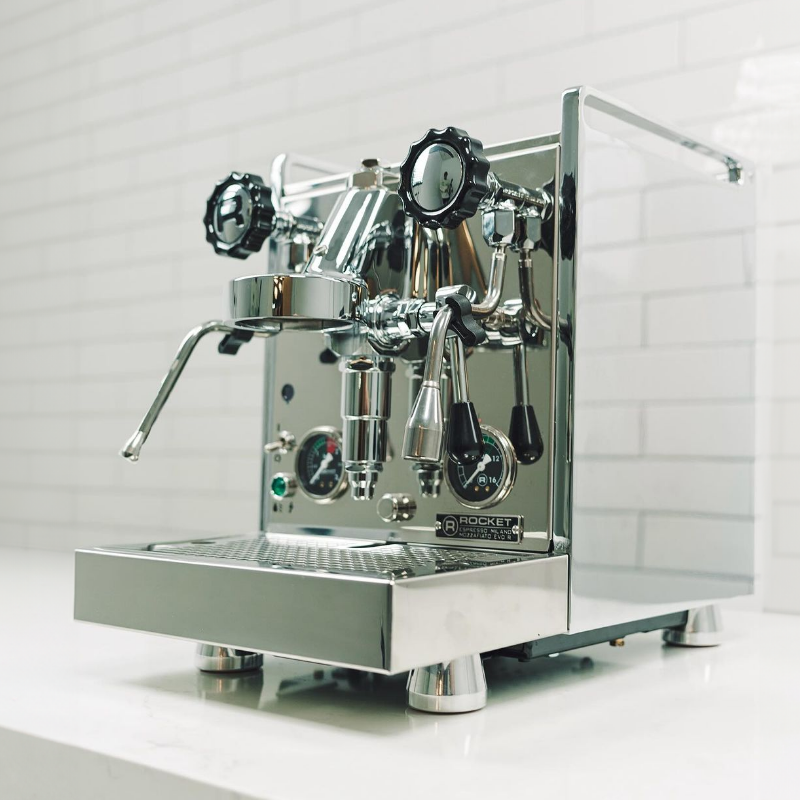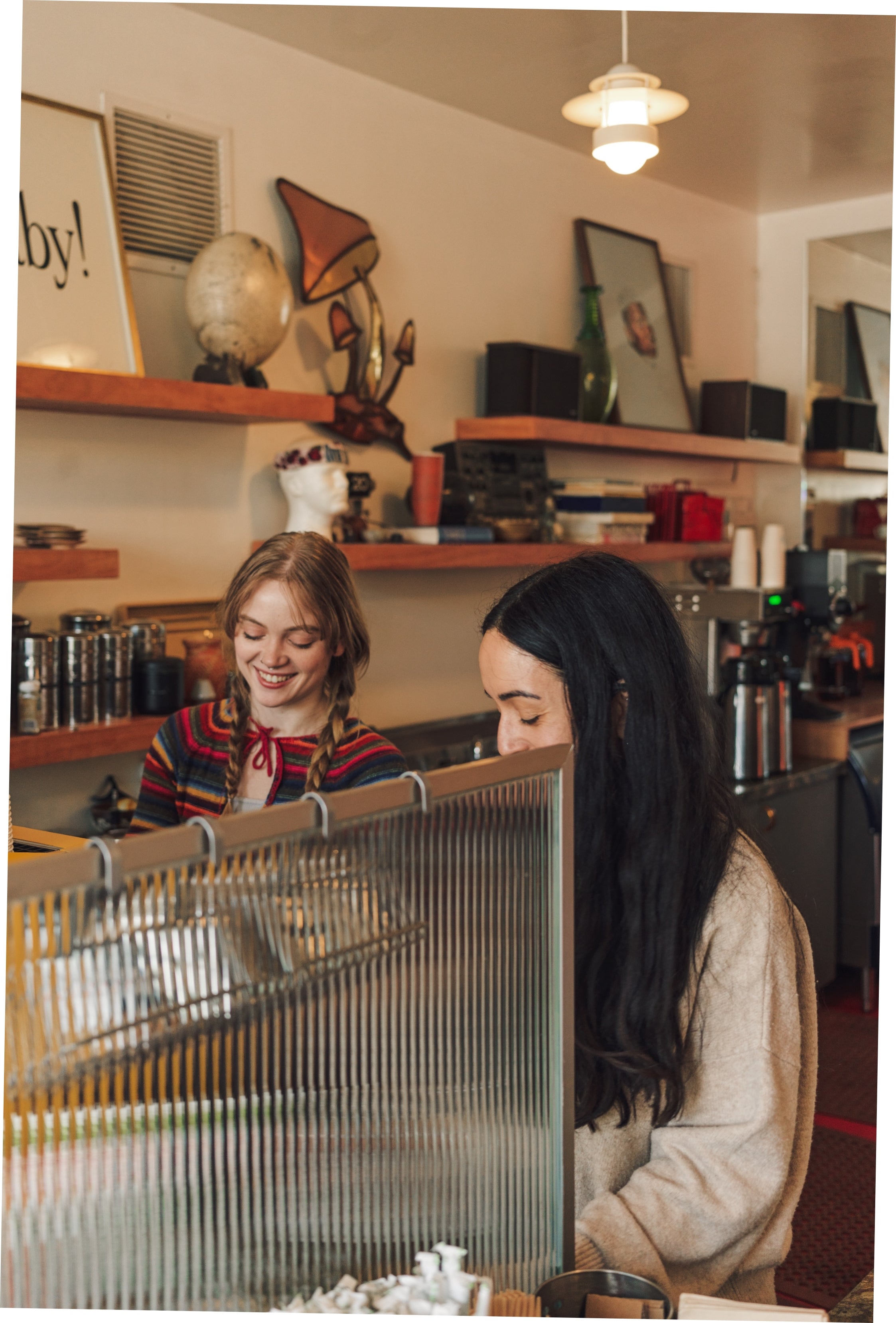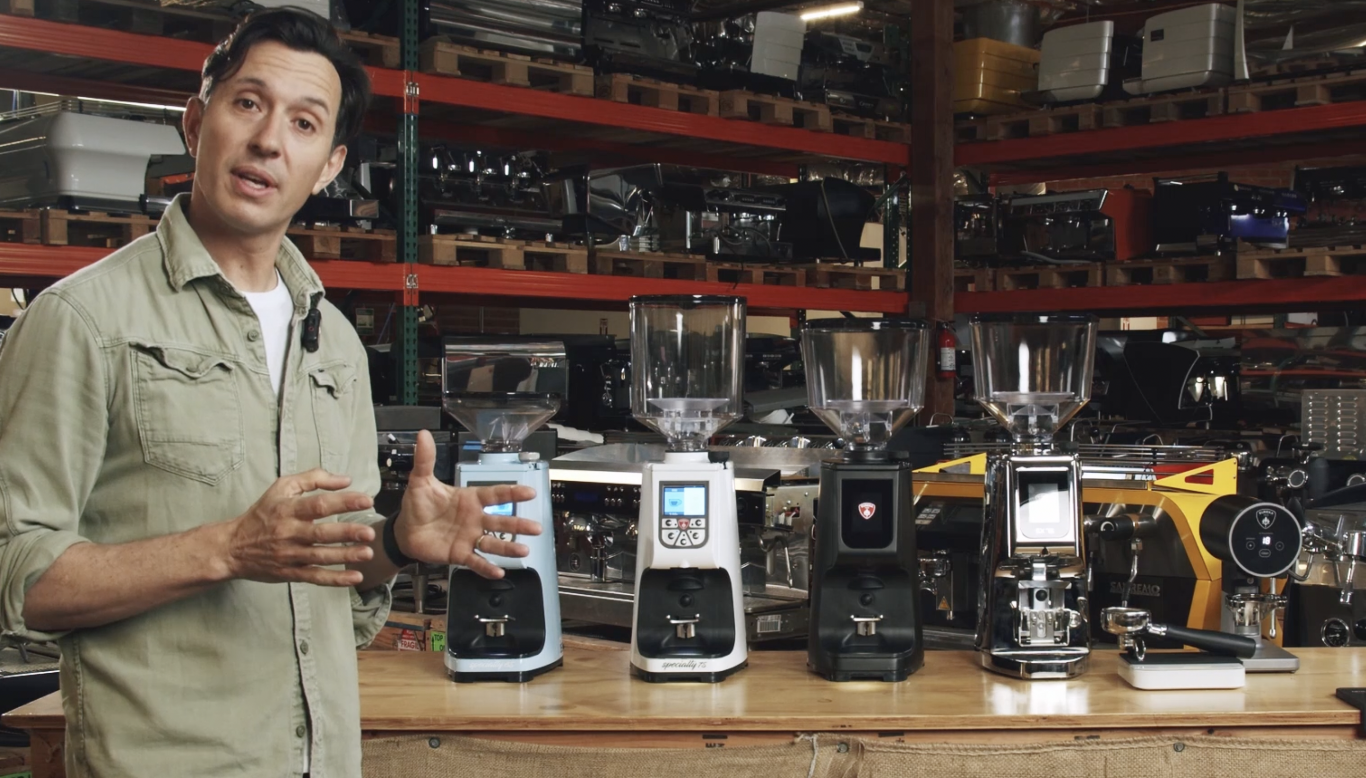Automatic Steamers, Automatic Tampers, and Barista Tools You Need
The Ultimate Guide to Automatic tampers, Automatic steamers, and Essential Barista Tools For café owners, coffee cart operators, and specialty coffee enthusiasts, having the right barista tools is critical for producing high-quality espresso drinks and maintaining efficiency during busy service. From auto-tampers to auto-steamers, investing in the right equipment can help your team pull consistent shots, steam milk perfectly, and speed up workflow without compromising quality. What is an Autotamper and Why It Matters An autotamper is a device designed to compress coffee grounds evenly and consistently in the portafilter. Tamping affects espresso extraction, so consistency is critical for flavor and crema. How Autotampers Improve Consistency Manual tamping can vary between baristas and even between shots, affecting taste and quality. Autotampers apply uniform pressure every time, ensuring each espresso shot is balanced and precise. This is especially useful in high-volume cafés and coffee carts where baristas need to pull back-to-back drinks efficiently. Choosing the Best Automatic tamper When selecting an automatic tamper, consider: Pressure adjustment – Some machines allow precise control for different grind sizes or roast profiles. Compatibility – Make sure the tamper fits your portafilter size and machine. Durability – Commercial-grade materials last longer under constant use. Are Automatic Steamers Worth the Investment? An Automatic Steamer automatically steams and textures milk to the desired temperature and consistency. While traditional steam wands require skill and practice, Automatic Steamers save time and reduce errors, making them ideal for busy cafés or mobile coffee carts. How Automatic Steamers Work Automatic steamers use sensors and automated controls to reach the correct milk temperature and microfoam texture. This ensures consistent drinks and helps maintain high-volume service without overworking your staff. Features to Look For in an Automatic Milk Steamers Adjustable temperature settings for different milk types Automatic milk frothing for lattes, cappuccinos, and flat whites Ease of cleaning to prevent buildup and ensure hygiene Essential Barista Tools Every Café Should Have Beyond autotampers and automatic steamers, several other barista tools improve workflow, efficiency, and drink quality: Knock boxes – For disposing of spent coffee grounds quickly Precision scales – To measure coffee doses accurately Tamping mats – Protect countertops and provide stable tamping surfaces Milk pitchers – For steaming, pouring, and latte art Thermometers – To monitor milk temperature if using manual steaming Having these tools on hand allows baristas to work faster and maintain consistent quality, even during peak hours. Why Automatic Barista Tools Are a Smart Investment Automatic barista tools like auto-tampers and auto-steamers help you achieve consistent espresso and milk texture by removing the margin of error that comes with manual technique. Training baristas to tamp correctly or steam milk perfectly takes time and money, and even experienced baristas can be inconsistent during busy rushes. With automation, every shot is tamped evenly, and every pitcher of milk is steamed to the right temperature and texture. This consistency at the bar allows you to focus on what truly sets your business apart—training your baristas to provide incredible service that complements your incredible coffee.
Is It Better to Buy a Used Espresso Machine or a New a Espresso Machine?
Is It Better to Buy a Used Espresso Machine Or A New One For My Coffee Shop? Choosing the right espresso machine for your café, restaurant, or home setup is one of the most important decisions you’ll make. Beyond just brand or model, there’s a big question every buyer faces: should you buy a brand-new espresso machine or invest in a used one? This guide will walk you through the pros and cons of each option, cost considerations, and expert advice to help you make the right choice. Here's the pro's and cons: The Benefits of Buying a New Espresso Machine When you buy a new espresso machine, you’re getting a machine straight from the manufacturer — untouched, unblemished, and (usually) with a full warranty. Here’s why many café owners choose to go new: 1. Manufacturer Warranty and Support - New machines typically come with a one-year (or sometimes two-year) manufacturer warranty. This means you’re covered for major repairs or replacements if something goes wrong early on. 2. Latest Technology and Features - If you want the newest features — like pressure profiling, automatic shot timers, or advanced energy-saving modes — a new machine is often the way to go. 3. Peace of Mind-Buying new means no surprises. You don’t have to wonder how the previous owner treated the machine, how often it was maintained, or if it has hidden damage. The Advantages of Buying a Used Espresso Machine Buying a used commercial espresso machine can save you thousands of dollars and still give you the same quality cup of coffee. For many café owners, this is the smarter choice. 1. Significant Cost Savings - A refurbished or pre-owned machine can cost 30–60% less than its brand-new counterpart. This frees up budget for other essentials like grinders, furniture, or hiring staff. 2. Tested and Proven Reliability - A properly refurbished espresso machine has already been “broken in” and then rebuilt by professionals — meaning many weak points have already been addressed. At Coffee Machine Depot, for example, every machine goes through a 24-point inspection process before it hits the showroom floor. 3. Faster ROI (Return on Investment) - With a lower upfront cost, it’s easier to reach profitability faster. A used espresso machine can often pay for itself within months, especially if you have a steady flow of customers. A Walk Through our Refurbishment Process: Buying used is only smart if you know the machine has been properly rebuilt and tested. At Coffee Machine Depot, we refurbish machines daily — taking them apart, descaling every line, polishing all the parts, repainting when necessary, and giving each machine a brand-new life. If you’d like to see what this process looks like, watch this video on our YouTube channel for a behind-the-scenes look at how we restore commercial espresso machines to like-new condition. Side-by-side Comparisons: Factor New Machine Used/Refurbished Machine Cost Highest upfront investment 30–60% cheaper Warranty Full manufacturer warranty Limited warranty (varies by seller) Technology Latest features & design Slightly older models Lead Time May require ordering & shipping wait Available immediately Risk Very low Low if bought from a trusted dealer ROI Slower payback due to higher cost Faster break-even If you're still having trouble deciding what's right for you, contact us. That's what we're here for. If you’re ready to upgrade or open your café, explore our current inventory of refurbished commercial espresso machines. Or better yet, call us today — we’d love to walk you through the process and help you choose the perfect machine for your business.
La Marzocco Espresso Machines: Investment or Overkill?
La Marzocco Espresso Machines: Investment or Overkill? La Marzocco machines are a favorite among coffee professionals worldwide, known for their craftsmanship, durability, and performance. If you’re considering bringing one into your café or business, this comprehensive FAQ breaks down everything you need to know—from choosing the right model to maintaining it long-term. Which La Marzocco Machine Is Best for Home Espresso or a Coffee Cart? None other than the Linea Mini. The Linea Mini is a classic machine, and one of the top selling models from La Marzocco, constantly in high demand and continuously pumping out top quality espresso. Which La Marzocco Machine Is Best for a Café? When it comes to commercial use, the most talked-about models are: Linea Classic SGB5KB90Strada Linea Classic S The Linea Classic S is La Marzocco’s workhorse. Beloved for its reliability and ease of use, it offers dual boilers, PID temperature control, and can be configured as AV (auto-volumetric) or EE (semi-automatic). It’s ideal for cafés that need consistent, repeatable espresso shots and long-term dependability. GB5 The GB5 combines timeless Italian design with cutting-edge thermal stability. With its sleek exterior and robust internals, it’s perfect for cafés that value both performance and aesthetics. Built to handle medium- to high-volume service with precision. KB90 Designed with barista workflow in mind, the KB90 introduces the revolutionary straight-in portafilter, reducing strain and speeding up service. It also features powerful steam and advanced controls—making it the choice for high-volume cafés with back-to-back rushes. Strada The Strada is La Marzocco’s most advanced machine, built for experimentation and control. With options for pressure profiling and customizable brew settings, it’s favored by specialty coffee shops that want to push the limits of espresso extraction. What’s the Difference Between the Linea Classic S and Other Models? Size & Capacity Linea Classic S: A versatile option for most cafés—compact yet powerful. GB5 & KB90: Larger footprint, built for higher volume and ergonomics. Strada: Available in multiple configurations, tailored to specialty shops. Features Linea Classic S: Reliable, straightforward, with PID and dual boilers. GB5: Adds temperature stability, sleek design, and advanced electronics. KB90: Focuses on workflow efficiency and speed. Strada: Offers the highest level of control and customization. Verdict:Choose the Linea Classic S if you want reliability and simplicity. Opt for the GB5 or KB90 if you’re running a high-volume café. Go with the Strada if you’re aiming for innovation and experimental coffee service. Are La Marzocco Machines Worth the High Price? Yes—if you value build quality, consistency, and long-term durability. La Marzocco machines are hand-built in Florence, Italy, using stainless steel boilers, precision components, and commercial-grade parts. You’re paying for: Precise temperature stability Café-grade steam power High-end craftsmanship Excellent resale value For a professional café environment, the investment pays off in consistency, customer experience, and fewer breakdowns. How Do I Maintain and Clean a La Marzocco? Daily Cleaning Backflush with water after every shift. Wipe and purge the steam wand. Rinse portafilters and baskets. Weekly Cleaning Backflush with espresso cleaner. Soak portafilter baskets and shower screens. Monthly Inspect and replace group gaskets as needed. Check filtration system. Descaling Frequency depends on water hardness. Always use filtered or softened water to reduce scale buildup. Descale as recommended to avoid internal damage. Do Commercial La Marzocco Espresso Machines Require Professional Installation? Yes. Unlike home models, commercial machines require: Direct plumbing 220V power Proper water filtration/softening Professional installation ensures correct setup, protects your warranty, and maximizes performance.
Essential Steps to Launch Your Coffee Business.
Understand your audience before pulling an espresso shot. Are they busy professionals looking for speed?
The Price of Perfection: What Makes La Marzocco Machines Worth It.
La Marzocco Price: Why It’s So Expensive, and What Makes Commercial Espresso Machines Worth the Investment
Espresso Machine Maintenance Myths: Separating Fact from Fiction
Have you ever heard that higher BAR pressure automatically means a better espresso machine? It’s a popular assumption in the coffee world, but it’s not always accurate. In reality, many factors
The Future of Espresso Machines in 2025
2025 as a transformative period for specialty coffee. By embracing advanced pressure profiling, sustainable designs, and connected technology, you can future-proof your investment and deliver unforgettable espresso for years to come.
Why a Coffee Cart Could Be Your Perfect Mobile Café.
Why a Coffee Cart Could Be Your Perfect Mobile Café Solution Have you ever considered breaking into the coffee scene without investing in a pricey storefront? A coffee cart might be the ideal alternative. From weddings and corporate events to farmers’ markets and pop-ups, a coffee cart provides unmatched flexibility, enabling you to serve specialty brews wherever the crowds gather. In this guide, we’ll explore the many benefits of owning a coffee cart, the must-have equipment for your mobile café, and key strategies to set your venture up for success. Contents 1. The Advantages of Owning a Coffee Cart 2. Essential Equipment for a Successful Coffee Cart 3. Finding the Right Coffee Cart 4. Setting Up Your Coffee Cart Business for Success 5. Where to Get Your Coffee Cart & Equipment Final Thoughts 1. The Advantages of Owning a Coffee Cart Low Startup Costs Launching a traditional coffee shop can cost a fortune in rent, renovations, and decor. By contrast, purchasing or leasing a coffee cart can save you thousands upfront, leaving you with more budget to invest in premium coffee beans, top-notch equipment, and marketing. High Flexibility One of the greatest perks of a coffee cart is its mobility. Take your business to events, festivals, office parks, or popular tourist destinations. This freedom lets you discover which areas generate the most demand for your drinks and helps you forge new connections wherever you set up. Scalability Once you find success with a single cart, you can expand your operation at a comfortable pace. If you’re consistently selling out at local events, consider adding another cart or even transitioning to a permanent space once you’ve built a devoted following. 2. Essential Equipment for a Successful Coffee Cart Espresso Machine: The centerpiece of your mobile café. Choose a reliable, compact commercial machine with consistent shots and efficient steaming power. Grinder: Freshly ground beans deliver superior taste. Opt for a commercial-grade grinder that can handle daily high-volume grinding. Water Filtration: Even if you rely on external water sources or large jugs, a proper filtration system ensures great flavor and protects your machine from scale buildup. Refrigeration: Keep milk, syrups, and other perishable items chilled with a small under-counter fridge or cooler. Power Source: Determine whether you’ll use on-site power outlets, a generator, or a battery system. Make sure your setup can handle the load. Cleaning Supplies: Stock espresso machine cleaner, sanitizers, and brushes. Regular cleaning ensures beverage quality and extends equipment lifespan. 3. Finding the Right Coffee Cart When selecting a cart, pay close attention to: Size & Layout: Ensure ample countertop space for your espresso machine, grinder, and POS system, plus storage for cups and supplies. Materials & Durability: If you’ll operate outdoors, choose a cart made with weather-resistant, sturdy materials to withstand daily wear and tear. Mobility & Weight: The cart should be easy to move. Look for strong, smooth-rolling casters and a design that allows for quick setup and breakdown. 4. Setting Up Your Coffee Cart Business for Success Research Permits & Regulations: Every city and venue has its own permits and health codes. Stay up to date on local rules before you start serving. Define Your Brand & Menu: Create a memorable name, appealing design, and signature offerings. Seasonal or specialty beverages can help attract loyal patrons. Scope Out Locations: Focus on high-foot-traffic areas such as office complexes, craft fairs, sporting events, and shopping centers. Market Strategically: Use social media to share eye-catching photos of your cart and specialty drinks. Offer promotions or loyalty discounts to encourage repeat business. Build a Network: Collaborate with local roasters, bakeries, and event planners. Strong partnerships help broaden your offerings and expand your reach. 5. Where to Get Your Coffee Cart & Equipment For a robust selection of coffee carts, espresso machines, grinders, and more, check out the Coffee Machine Depot Coffee Cart Collection . Their inventory covers various budgets and business sizes, and their experienced team can guide you to the perfect setup. Final Thoughts A coffee cart is a cost-effective, versatile way to enter the coffee industry. By selecting reliable equipment, perfecting your menu, and marketing wisely, you can serve exceptional coffee on the go and build a loyal customer base. Explore Coffee Machine Depot’s extensive product range to find the right fit for your vision—and take the first step toward making your mobile café dreams a reality.
Essential Tips in 2024 for Coffee Shop Success.
Learn why investing in barista training is key to improving customer satisfaction, boosting coffee shop efficiency, and retaining top talent.
Best Commercial Coffee Grinders for Cafes in 2024
A high-quality commercial coffee grinder ensures that you get a consistent grind every time. Consistency is key to making great coffee because it affects the extraction process.
How to choose a Commercial Espresso Machine
5 Essential Tips for Buying an Espresso Machine for Your Cafe 5 Essential Tips for Buying an Espresso Machine for Your Cafe If you're a new or aspiring cafe owner, choosing the right espresso machine can be an intimidating task. To help make the process easier, we've compiled five essential tips that will guide you through purchasing the perfect espresso machine for your cafe. These tips will help you understand key machine features, terminology, and considerations specific to a commercial setting. Table of Contents 1. Group Heads 2. Steam Wands 3. Semi-Automatic vs. Automatic Machines 4. Boiler Systems 5. Parts Availability 1. Group Heads The group head is where the water from the boiler is transferred to the filter basket, and this is where espresso extraction happens. The number of group heads dictates how many espressos you can pull at one time. Most commercial espresso machines come with one, two, or three group heads, though you may find machines with up to four. For most cafes, two or three group heads are the norm. For example, if your cafe uses up to 15-20 kg of coffee beans per week, a two-group machine should suffice. If your coffee volume exceeds 20 kg per week, consider upgrading to a three-group machine. Keep in mind that the number of group heads affects the power supply, with a two-group machine typically requiring a 20-amp power supply, while a three-group machine often needs a 32-amp supply. 2. Steam Wands Steam wands are vital for frothing milk, which is essential for creating lattes, cappuccinos, and other milk-based espresso drinks. Machines generally come with one or two steam wands. If you're operating in a high-volume environment, a machine with two steam wands allows multiple baristas to froth milk simultaneously, speeding up drink production during busy periods. 3. Semi-Automatic vs. Automatic Machines Understanding the differences between machine types is essential when deciding which best suits your needs. Here's a breakdown of each: Lever Machines: Traditional machines, often found in specialty coffee shops, where the barista uses a manual lever for espresso extraction. Semi-Automatic Machines: The barista starts and stops the extraction manually with a button press, providing greater control. Automatic Machines: The machine automatically stops the extraction once a set amount of water has been dispensed, ensuring consistency. Super Automatic Machines: Common in offices or high-volume settings, these machines handle everything from grinding to milk frothing at the touch of a button. 4. Boiler Systems Boilers are the heart of any espresso machine, storing heated water and playing a critical role in both espresso extraction and milk steaming. Machines can have either single or dual boiler systems: Single Boiler Machines: These are typically entry-level machines that handle both coffee extraction and milk steaming. However, this can affect consistency as the machine manages both tasks simultaneously. Dual Boiler Machines: These machines have separate boilers for espresso extraction and milk steaming, ensuring more consistent results, especially in high-volume environments. 5. Parts Availability When investing in an espresso machine, ensure the availability of replacement parts. With so many brands on the market, not all machines have readily available parts. If something breaks, you'll want a machine that can be quickly serviced to minimize downtime. Research the brand’s reputation for part availability and consult with local repair services to ensure future maintenance will be hassle-free. By following these five tips, you’ll be well-equipped to make an informed decision when purchasing an espresso machine for your cafe. If you have any questions or need expert advice, feel free to contact us at Coffee Machine Depot.
How to open a coffee shop in 2024.
Opening a coffee shop in today's world can be challenging but doesn't have to be hard.
How to Dial in Your Grinder for Perfect Shots
Choosing the right commercial espresso grinder is crucial for perfect espresso shots.
2024 Best Home Espresso Machines.
Choosing the right home espresso machine as a former professional barista means finding one that replicates the power, consistency, and ease of use you're accustomed to in a café setting.
10 Marketing Tips for your Coffee Shop in 2024
Here’s a little insider knowledge: If you're spending hours on social media trying to reach new customers, you might be wasting your time.
Eureka Grinders, 2024 Coffee Shop Game Changers
Eureka Libra: The New Standard in Weight-Based Grinding The Eureka Libra grinder has been highly anticipated in the coffee community. Building on the foundation of the Specialita model, the Libra retains the same 55mm burrs and digital touchscreen interface but introduces a significant upgrade—weight-based grinding. This is Eureka’s first foray into integrating a scale directly into their grinders, providing precise and consistent dosing. Key Features: 55mm flat burrs for consistent grind size. Integrated scale for accurate weight-based grinding. Digital touchscreen for easy operation. Quiet operation, similar to the Specialita model. While there are some minor quirks, such as needing to turn the grinder off when not in use, the Libra offers exceptional performance once you get accustomed to its operation. If precision is your priority, the Libra could be the perfect choice. See the Eureka Libra in action. Prometheus: The Ultimate Grinder for Precision and Style Introducing the Eureka Prometheus, a grinder that combines cutting-edge technology with sleek design, making it a standout in the world of coffee grinders. The Prometheus is engineered for those who demand precision in their coffee brewing, with features that ensure consistent and high-quality grinds. Key Features: 75mm flat burrs designed for both espresso and all-purpose grinding. Stepless micrometric regulation system for infinite grind adjustments. Silent technology for quiet operation. High-speed grind time, ideal for both home and commercial settings. Ergonomic design with a futuristic look, making it a stylish addition to any coffee setup. The Prometheus is perfect for coffee enthusiasts who want the best of both worlds: a grinder that performs with unparalleled precision and looks great while doing it. Its versatility allows it to handle everything from fine espresso grinds to coarser settings for pour-over or French press. Discover the Eureka Prometheus. Why Choose Eureka? Eureka has been a leader in grinder innovation for over a century, consistently delivering high-quality products for both home and commercial use. Their commitment to innovation and excellence is evident in the new updates to their Mignon series, offering features that meet the needs of today’s coffee enthusiasts. Innovation: Over 100 years of continuous innovation in coffee grinding technology. Quality: Known for durable, high-performance grinders that deliver consistent results. Versatility: Wide range of models tailored for various brewing methods and user preferences. For anyone serious about coffee, Eureka’s grinders are a reliable choice that ensures you get the best out of your beans every time. Contact Us At Coffee Machine Depot, we’re here to help you find the perfect grinder for your needs. If you have any questions or need guidance on which model might be right for you, our sales team is available by phone, chat, or email. We’re happy to assist you in making an informed decision. Phone: Call Us Email: Send Us an Email Live Chat: Available on our website. Watch our latest video on the Full ATOM Line up.

